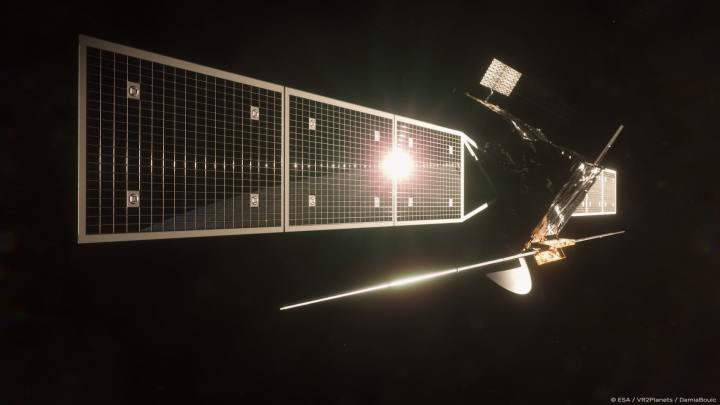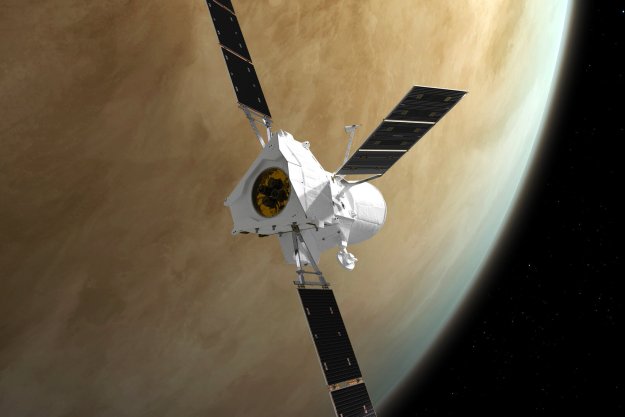
A surface temperature hot enough to melt lead. An atmosphere so thick the pressure on the surface is equivalent to being 3,000 feet underwater. Rains of sulfuric acid. Venus is not an inviting place to visit, but sending probes there could answer some long-standing questions about the history of the solar system and our own planet. Now, the European Space Agency (ESA) has announced it will send a mission to Venus called EnVision.
EnVision joins the two missions to Venus recently announced by NASA: VERITAS, which will investigate the planet’s surface, and DAVINCI+, which will probe its atmosphere. These three missions together will teach us about a planet that arguably has been overlooked in the last couple of decades, and about which we still have a tremendous amount to learn.
“A new era in the exploration of our closest, yet wildly different, Solar System neighbor awaits us,” said Günther Hasinger, ESA’s director of science. “Together, with the newly announced NASA-led Venus missions, we will have an extremely comprehensive science program at this enigmatic planet well into the next decade.”
ESA aims to spend the next 10 years designing, building, and testing EnVision, with an earliest possible launch date of 2031. The journey from Earth to Venus will take around 15 months, and then it will take another 16 months for the craft to slow down and enter orbit. The NASA missions will operate on similar schedules, with expected launches between 2028 and 2030.
One of the instruments on board EnVision will be an imaging and radar instrument that will take the highest quality images of Venus yet, and will offer a considerable upgrade over the previous images of Venus captured by NASA’s Magellan mission in the 1990s. This instrument, called the Venus Synthetic Aperture Radar (VenSAR), will be provided by NASA as part of its cooperation with ESA.
“We are thrilled to contribute to ESA’s exciting new mission to investigate Venus,” said Thomas Zurbuchen, NASA’s associate administrator for science. “EnVision leverages strengths in instrument development by both our agencies. Combined with NASA’s Discovery missions to Venus, the science community will have a powerful and synergistic set of new data to understand how Venus formed and how the surface and atmosphere changed over time.”
Venus is interesting to scientists because they think that at one point the planet was similar to Earth. The two planets are similar in size and are thought to have been formed in the same way, and Venus may even have had water on its surface at one point long ago in its history. But the two planets diverged in their evolution, with Venus acquiring a thick, poisonous atmosphere with incredibly high temperatures and pressure on the surface — to such a degree that ESA has named Venus “Earth’s evil twin.”

Collecting more information on Venus can help planetary scientists understand how the two diverged, teaching us about the history of Earth as well.
“I am delighted that the synergistic capabilities of these three new missions will transform our fundamental understanding of Venus,” said Lori Glaze, director of NASA’s Planetary Science Division at the agency’s headquarters in Washington. “ESA’s EnVision mission will provide unparalleled high-resolution imaging and polarimetry capabilities. High-resolution images of many dynamic processes at Mars profoundly changed the way we thought about the Red Planet, and images at similar scales have the potential to do the same for Venus.”
Editors' Recommendations
- Dramatic images show a large satellite tumbling toward Earth
- OSIRIS-REx mission returns asteroid sample to Earth in NASA first
- Inside the crazy plan to scoop up and bring home a bit of the Venus atmosphere
- JUICE mission to Jupiter sends back first images of Earth from space
- Axiom Space to send third private mission to the International Space Station



